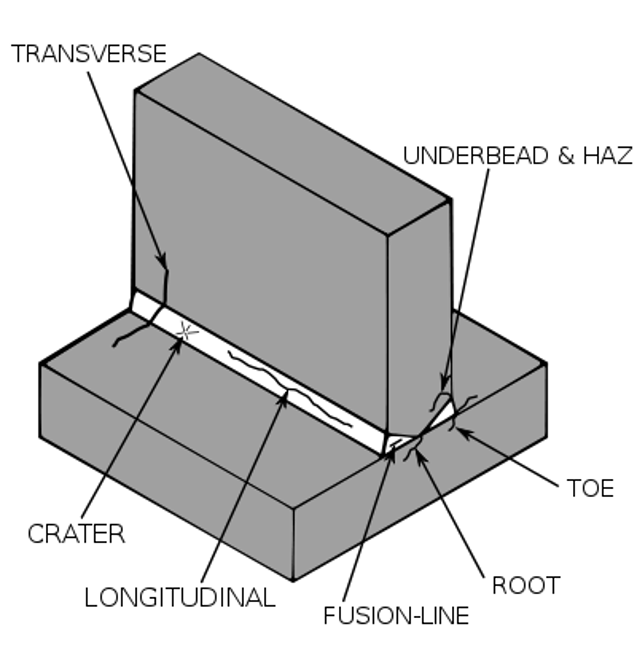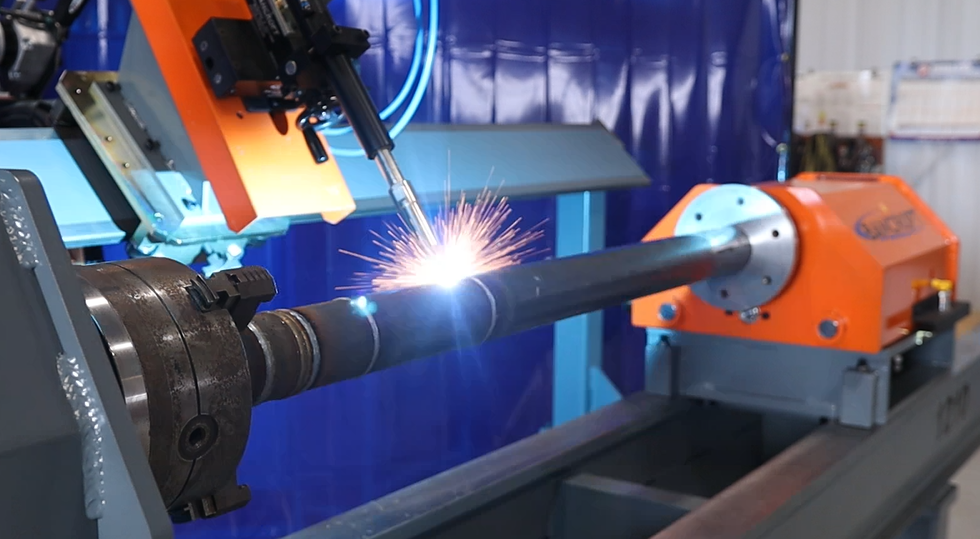Welding cracks are one of the more severe defects. If you have a weld cracking problem, there are two questions to ask yourself to address the root of the problem:
- Did the crack occur during the weld, after cooling or during a secondary/finishing operation?
- Is the crack located within the weld or next to it?
Our custom automatic welding machines help limit weld cracks and achieve high-quality results. Let’s walk through a few common types of weld cracks and what you can do to limit them in the future!
Centerline Cracks
Commonly referred to as longitudinal cracks, centerline cracks typically extend the entire length of a weld. This happens when one or more of the following occur: there is an improper width-to-depth ratio, you’re using a base material with a low melting point or when the welding surface is concave in shape.
How to Limit Centerline Cracks
- Run a lower current to decrease penetration
- Decrease voltage
- Slow down travel speeds
- Aim for a width-depth ratio between 1:1 – 1:3:1
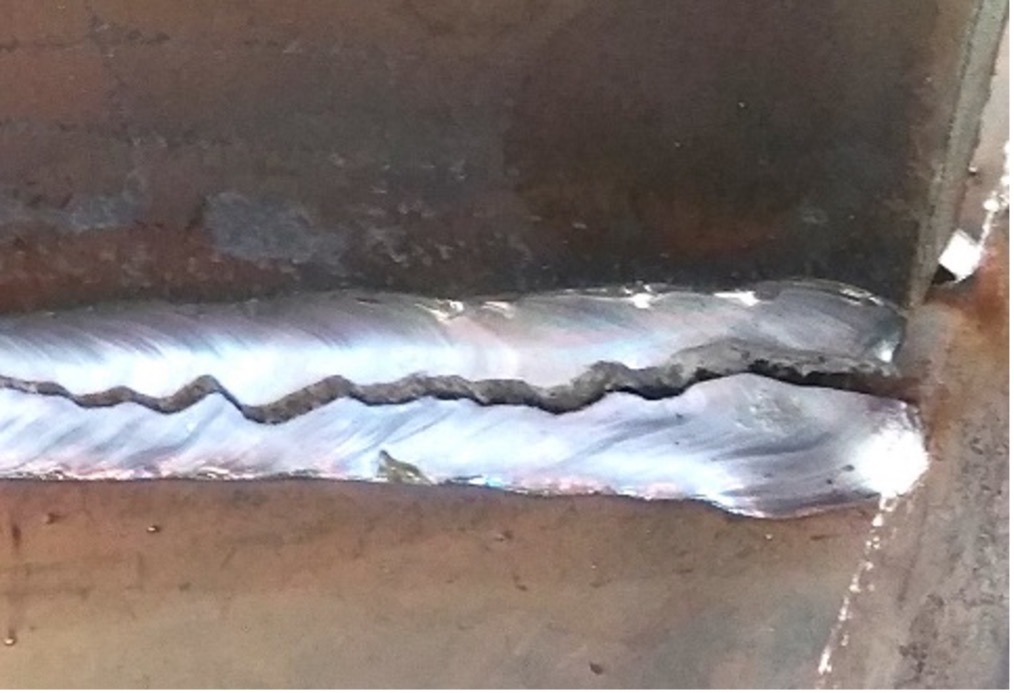
Example of a Centerline Crack
Crater Cracks
When the weld pool doesn’t have enough volume after the cooling process, crater cracks occur. This is most common when welding aluminum as it’s susceptible to both heat and stress cracking during the welding process. Stainless and carbon steels are much less susceptible to crater cracks, but caution must still be taken!
How to Limit Crater Cracks
- Ensure your using enough filler material
- Check that your parts have the proper fit up
- At the end of your weld, weld back over the bead for 0.5-1 inch (overlay technique)

Example of a Crater Crack
Root Cracks (Underbead or Toe Cracks)
This type of crack is located at the weld toe—or a heat affected zone. Underbead cracks occur at lower temperatures and sometimes are not discovered until 72 hours after the weld cools. This occurs when welding a sensitive material with excessive Hydrogen—which results in shrinkage, stresses, and cracks!
How to Limit Underbead Cracks
- Reduce Hydrogen by rethinking your filler metal and check the storage environment of your filler metal
- Apply thinner weld layers
- Increase time between passes
- Maintain proper pre-heat and post-heat protocol
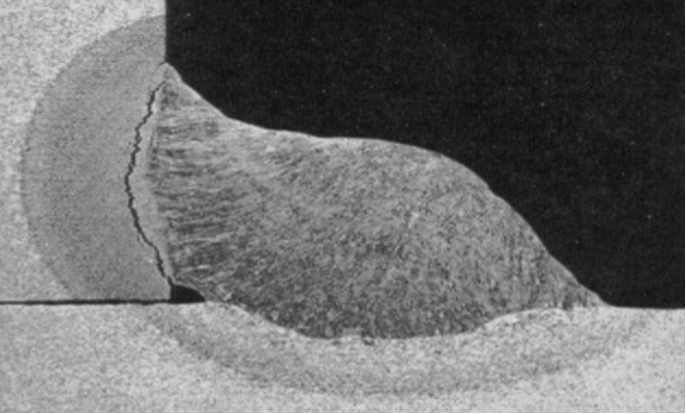
Example of a Root Crack
Transverse Cracks
Similar to underbead cracks, transverse weld cracks also commonly are not noticed until after the weld cools. They share the same causes as underbead cracks—too much Hydrogen and shrinkage stress. Transverse cracks most often occur on high strength steels that don’t require pre-heat.
How to Limit Transverse Cracks
- Reduce Hydrogen by rethinking your filler metal or check the storage of your filler metal
- Maintain proper pre-heat and post-heat protocol
- Use lower strength consumables
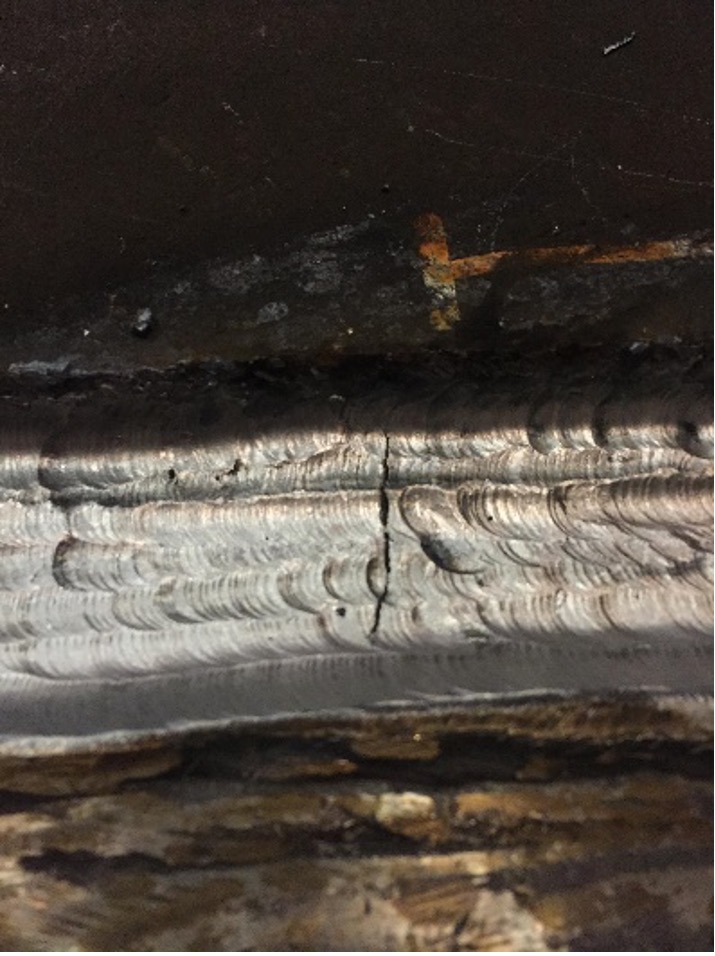
Example of a Transverse Crack
Custom Welding Systems that Prevent Cracks
Our biggest piece of advice is to make sure you have everything in order before welding, as it’s much easier than trying to fix problems later down the road. Always follow basic guidelines for cleaning and storing your base and filler material and carefully select the right welding equipment! Need more help? Reach out, we’re here for you!
